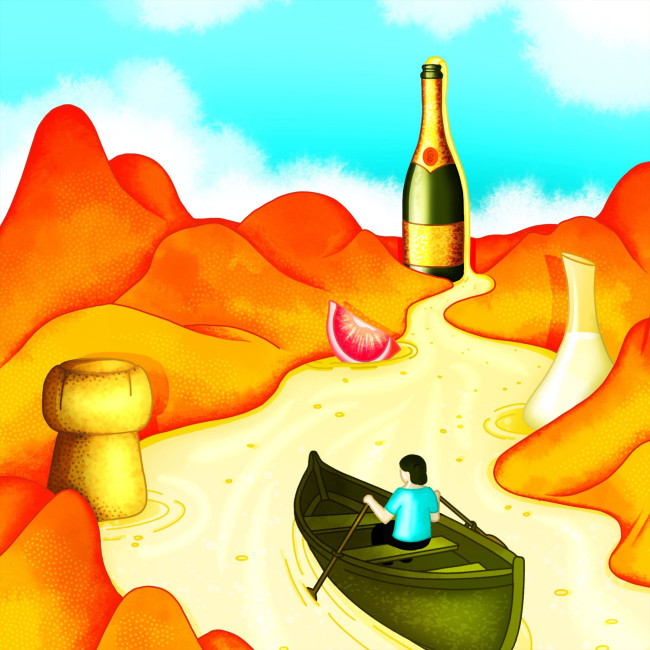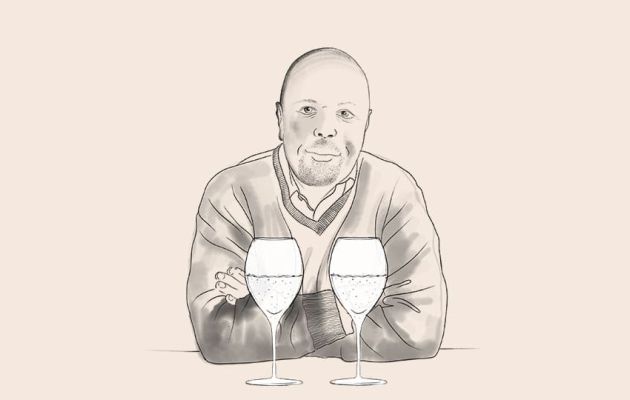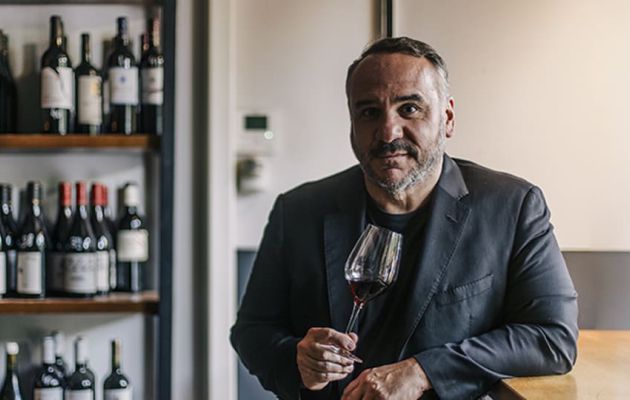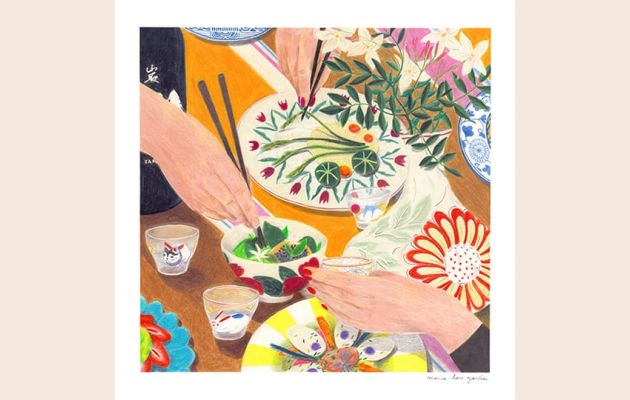
[ WINES ]
5 effervescent anecdotes
from Seika Hosokawa, Japan & France
The winner of the 2021 Ruinart Challenge, female sommelier Seika Hosokawa boasts some twenty years’ service in restaurants in her native country, Japan, and also in the renowned cellars of Grand Véfour, Royal Monceau and Jules Verne.
Now an independent sommelier, she has made it her mission to design an intricate Champagne experience in order to create a special bond between French and Japanese cultures.
Between two bubbly masterclasses, Seika Hosokawa shared five anecdotes where Champagne crossed her path, and proved to be a powerful spark for long-lasting yet subtle memories.
01.
The first encounter with Champagne Veuve Cliquot.
“When I started working in a restaurant in Japan, one of my colleagues introduced me to Champagne with the Veuve Cliquot Carte Jaune label. I was immediately taken aback by its vibrancy. Obviously I had already tasted lively, tense white wines but in this case, the bubbles turned up the dial on aroma, adding a unique sensation and great body with depth, freshness and appetising flavours. It was like I was drinking a wine that was still alive, one that changed as I was drinking it under the influence of the temperature and the bubbles that gradually disappeared in the glass”.
02.
Unexpectedly decanting Krug Champagne.
“In a French restaurant in Japan, a customer asked me one day to decant the Krug Champagne he had chosen. This was not something people usually asked for and it was quite a tall order considering all the mousse. But once I’d tasted it before and after decanting, I realised there was a significant difference. Just like with all decanted wines, the aromas opened up but in addition to this, a lot of the bubbles had disappeared. And that’s exactly how the customer wanted to taste it, like a fine still wine, a blend of Chardonnay and Pinot noir which is very uncommon. This only strengthened my belief in the fact that aside from its bubbles, Champagne is first and foremost a fine wine!”
03.
A picnic with a magnum of Bollinger.
“With Champagne, every occasion becomes a special memory! To celebrate my daughter’s second birthday, we organised a picnic on the Champ de Mars with a magnum of Bollinger Champagne. In my opinion, you should ideally choose a bottle for the entire meal – a Sunday lunch – because once it is served, Champagne gradually opens up, becomes warmer and follows the course of the meal. When you take the bottle out of the EuroCave Champagne cabinet, its temperature is between 8 and 10°C then, after around thirty minutes, its exuberance is perfect for drinking with appetisers and starters. When the more structured fish, meat or game dishes are served, the temperature will have risen to 14 to 16°C so that you can fully enjoy the complexity and depth”.
04.
How umami and autolysis resonate with each other.
“When I won the Ruinart Challenge in 2021, the panel explained to me that what tipped the balance in my favour were the unique wine and food pairings I suggested with blind-tasted wines. For example, with a Blanc de Blancs Champagne, I suggested a Dublin Bay prawn tempura served with a cream of Champagne onion soup. In my opinion, Champagne is particularly enjoyable with the subtlety of Japanese cuisine, particularly seafood dishes. The umami and autolysis resonate with each other (Ed. during the lees maturation process, the yeast breaks down and releases aromatic compounds). For pairing with a Blanc de Blancs Champagne, I would also suggest miso-marinated cod, lightly grilled with yuzu zests, dried bonito with kombu and shiitake mushrooms, or bream marinated with algae”.
05.
The taste of victory with a 2007 Dom Ruinart rosé Champagne.
“To celebrate winning the Ruinart Challenge, we invited the Ruinart team to the Jules Verne where we served a 2007 Dom Ruinart rosé with a mandarin and pink grapefruit dessert combined with a passion fruit sauce. In my opinion, rosé Champagne is in some ways in a category of its own. It has more body and benefits from more tannins, which makes it suitable for alternative pairings, with characterful meats or fish like red mullet. It’s also easy to imagine it pairing with spicy foods, Oriental or Japanese cuisine with ginger, lemongrass or coriander”.
Illustration - Romane Laurière
Romane Laurière is an illustrator and art director from Bordeaux. She draws her inspiration from nature and the whimsies of everyday life, which she often interprets through a surrealistic lens. After studying at the Beaux-Arts of Orléans and ECV in Bordeaux, Romane worked as an art director in a communication agency for three years before dedicating herself to illustration. Through her works, she invites us to embark on new journeys where each illustration tells a new story. Abstractions meet absurdities, and reflections blend with lightness. Her illustrations reflect these micro-narratives, these small realities that come to life on paper but, most importantly, in our minds.
Prolong the experience
Discover the profiles of creative and influential personalities explaining their relationship with wine, the secrets of sommeliers or legendary establishments.
When you subscribe to the magazine, your email address is only used to send you our content newsletter. You can unsubscribe at any time by clicking the unsubscribe link included in each newsletter. To find out more about management of your data and your rights, click here .



